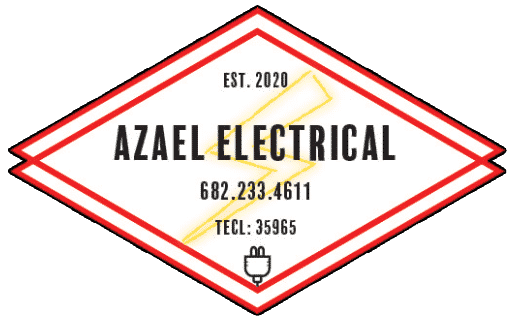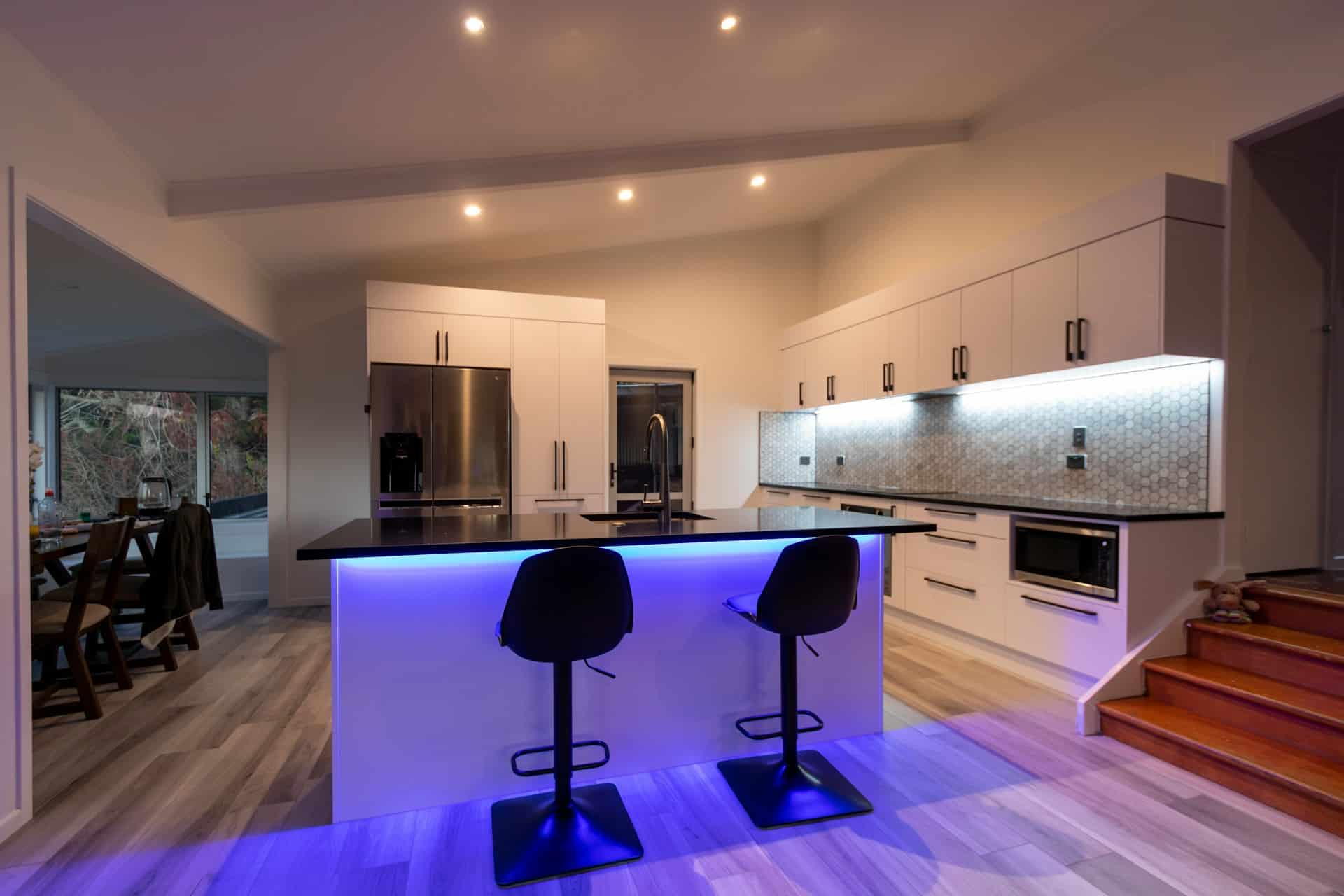Switching to LED lighting is a smart choice for any homeowner looking to improve their home’s illumination and energy efficiency. LED stands for Light Emitting Diode, a technology that has rapidly gained popularity due to its numerous benefits over traditional lighting options like incandescent and fluorescent bulbs. LEDs are highly efficient, long-lasting, and environmentally friendly, making them a perfect choice for modern homes.
One of the key advantages of LED lighting is its energy efficiency. LED bulbs use significantly less electricity compared to traditional bulbs, helping you save on your energy bills. In addition to saving energy, LEDs have a much longer lifespan, reducing the need for frequent replacements. This longevity makes LEDs an economical option in the long term, despite the higher initial cost.
Beyond cost savings, LED lighting offers several practical and environmental benefits. LEDs produce light in a specific direction, reducing the need for reflectors and diffusers that can trap light. They also emit very little heat, making them safer to use and touch.
Whether you’re looking to enhance your indoor spaces, light up your garden, or integrate smart lighting into your home, LEDs provide versatile and effective solutions.
What is LED Lighting?
LED stands for Light Emitting Diode, a technology used in lighting up spaces more efficiently than traditional lighting methods. Unlike incandescent bulbs that use a filament to produce light and fluorescent bulbs that use gas, LEDs produce light through a semiconductor. When electricity passes through this semiconductor, it emits light. This method uses less energy and generates less heat, making LEDs a safer and more efficient lighting option for homes.
How LED Lights Work
LED lights function by passing an electrical current through a semiconductor material, which then emits photons (light). This process is called electroluminescence. LEDs are designed to emit light in a specific direction, which reduces the need for reflectors and diffusers that can trap light.
The efficiency of LEDs comes from the fact that they convert most of the energy they use into light rather than heat. Additionally, LEDs can be integrated into various forms and fixtures, making them versatile for multiple lighting applications.
Advantages of LED Lighting
1. Energy Efficiency
One of the biggest advantages of LED lighting is its energy efficiency. LED bulbs use far less energy than traditional incandescent and fluorescent bulbs. In fact, LEDs use about 75% less energy and last up to 25 times longer than incandescent lighting.
This significant reduction in energy use can lead to substantial savings on your electricity bills. Since LEDs produce light more efficiently, they also help reduce the overall energy consumption of your household.
2. Longevity and Durability
LED lights are known for their long lifespan. While incandescent bulbs may last around 1,000 hours and compact fluorescent bulbs about 8,000 hours, LEDs can last up to 25,000 hours or more.
This longevity means that you don’t need to replace LEDs as often, saving you money and reducing the hassle of frequent bulb changes. Additionally, LEDs are built to be more durable, with a robust design that can withstand impacts and vibrations better than traditional bulbs.
3. Environmental Benefits
LED lighting has numerous environmental benefits. Since LEDs use less energy, they help decrease the demand for power plants and reduce greenhouse gas emissions. Plus, LEDs do not contain harmful elements like mercury, which is found in fluorescent lamps, making them easier to dispose of without harming the environment. Switching to LED lighting contributes to a greener, more sustainable planet by lowering your carbon footprint and reducing waste.
Practical Applications for LED Lighting
1. Indoor Uses
LED lighting can be effectively utilized indoors to enhance both functionality and aesthetics. Use LED bulbs in living rooms, bedrooms, and kitchens to provide clear, bright lighting that covers a wide area. These lights work well in recessed lighting fixtures, under-cabinet lights, and even in chandeliers.
LEDs are also ideal for task lighting in areas like home offices and study rooms, providing focused light that reduces eye strain. Additionally, LED strip lights can be installed around shelves, mirrors, and picture frames to add a touch of elegance.
2. Outdoor Uses
Outdoor lighting is another area where LEDs excel. Use LED floodlights to illuminate your yard or garden, making these spaces safer and more usable after dark. Pathway lights and deck lights can enhance the overall ambiance and ensure safe navigation around your property. Motion-sensor LED lights are perfect for security, providing bright lighting when movement is detected. Because LEDs are durable and weather-resistant, they perform well under various weather conditions.
3. Smart Home Integration
LED lights are an excellent choice for smart home systems. Many LED bulbs are compatible with smart home platforms like Amazon Alexa, Google Home, and Apple HomeKit. You can control these lights using voice commands or through smartphone apps, allowing you to adjust brightness levels, change colors, and set schedules.
Smart LED lighting can improve convenience and energy efficiency, as you can easily automate your lighting to turn off when not needed or adjust according to the time of day.
Tips for Choosing and Installing LED Lights
1. Selecting the Right LED Bulbs
When choosing LED bulbs, consider the color temperature and brightness. Color temperatures are measured in Kelvins (K) and range from warm (around 2700K) to cool (above 5000K). For a cozy atmosphere, go with bulbs in the 2700K-3000K range.
For workspaces, opt for brighter, cooler light in the 4000K-5000K range. Also, pay attention to the lumens rating to ensure you get the desired brightness. Look for bulbs with the Energy Star rating to guarantee energy efficiency and quality.
2. Installation Best Practices
Installing LED lights is straightforward, but following some best practices can ensure optimal performance. First, always turn off the power before replacing any bulbs or fixtures to avoid electrical shocks.
Use LED-compatible dimmers to prevent flickering and extend the lifespan of your bulbs. Ensure that the LED bulbs you choose fit snugly into your existing fixtures. If you’re installing new fixtures, make sure they’re rated for LEDs to avoid overheating and other issues.
3. Maintaining Your LED Lighting System
Maintaining LEDs is relatively simple due to their durability and long life. Keep your LED fixtures clean by regularly dusting them to ensure they perform at their best. Check for any loose connections or flickering lights, which can indicate wiring issues.
If you notice any bulbs starting to dim or fail sooner than expected, it could be due to poor fixture compatibility or electrical problems, which should be addressed promptly. Proper care can help maximize the benefits of your LED lighting system.
Why LED Lighting is Best for Your Home
Switching to LED lighting offers numerous benefits, from energy efficiency and durability to environmental advantages and versatility in various applications. Whether you’re lighting up your living room, enhancing your backyard ambiance, or integrating smart home features, LEDs provide a reliable and effective solution. Understanding how to select, install, and maintain your LED lights ensures you get the most out of this advanced technology.
If you’re considering upgrading your home’s lighting system, it’s essential to make informed choices and follow best practices. For personalized advice and professional installation, reach out to Azael Electrical.
Our team of experts is ready to help you transform your home with the latest in LED lighting technology. Contact our local electricians in Arlington today to learn how we can enhance your living spaces with energy-efficient, long-lasting LED solutions!

